Why Do People Love Cats?
Are Cat-Lovers All Crazy? (Of course not)
Thanks for visiting my website that is all about cats. (In particular Burmese, Ragdoll and Maine Coons)
Cats. They have become one of the most beloved pets around the world. Whether they are lounging on our laps, playfully chasing a ball of yarn, or gracefully perching on the highest shelf, cats bring joy and companionship to millions of people.
But have you ever wondered why these mysterious creatures hold such a special place in our hearts? Well the good news is that I have – even if you haven’t. Let’s dive into the reasons people love cats so much.
Cats are Independent yet Affectionate
One of the fascinating aspects of cats is their unique blend of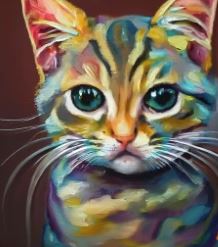 independence and affection. Unlike dogs, cats are known for their independent nature. They can entertain themselves and are often content spending time alone.
independence and affection. Unlike dogs, cats are known for their independent nature. They can entertain themselves and are often content spending time alone.
However, cats also seek out human company when they desire attention or affection.
This combination of independence and affection appeals to many people. Cats provide companionship without being too demanding.
They offer love and affection on their own terms, making people feel special when a cat chooses to snuggle up or play. It’s this mix of aloofness and charm that creates a magnetic pull towards cats.
Maine Coon Cats – they can be big
Healthy Food for your Cat – What is the deal?
I Can Teach My Cat To Do Tricks? (Seriously?)
Cats have a Calming Presence

Research has shown that being around cats can have a calming effect on our emotions. The rhythmic sound of a cat’s purr has a soothing effect on our nervous system, reducing stress and anxiety.
The act of stroking a cat can release endorphins, the feel-good hormones, promoting relaxation and well-being.
In today’s fast-paced and stressful world, having a cat as a companion can help us unwind and find solace. Just spending a few minutes with a purring cat in our lap can provide a much-needed break from the chaos of everyday life.
Cats are Low-maintenance and Cost-effective
Compared to other pets, cats are relatively low-maintenance, making them a popular choice for many households. They are naturally clean animals and spend a significant amount of time grooming themselves. This means less time spent on grooming and bathing compared to dogs.
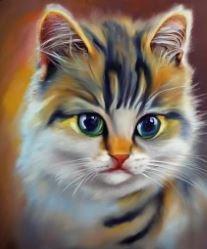 Additionally, cats are independent when it comes to their bathroom habits. With a litter box, they take care of their needs without requiring daily trips outside.
Additionally, cats are independent when it comes to their bathroom habits. With a litter box, they take care of their needs without requiring daily trips outside.
This adds convenience to the lives of busy individuals or those who don’t have access to outdoor spaces.
From a financial standpoint, cats are also a more affordable option. Their food, veterinary care, and other supplies generally cost less than those required for larger pets like dogs.
This affordability factor makes cats an appealing choice for individuals and families looking to introduce a furry friend into their lives without breaking the bank.
Let’s Compare Cats!
| Cat Breed | Intelligence | Friendliness | Adaptability | Energy Level | Grooming Needs | Playfulness | Affection Level | Sociability | Shedding |
|---|---|---|---|---|---|---|---|---|---|
| Exotic Shorthair | Low | Medium | Medium | Low | Low | Low | Medium | Medium | Medium |
| Ragdoll | Low | High | High | Low | Medium | Medium | High | High | Medium |
| British Shorthair | Medium | High | High | Low | Low | Medium | Medium | Medium | Medium |
| Maine Coon | High | High | High | High | Medium | High | High | High | High |
| Scottish Fold | Medium | Medium | Medium | Low | Low | Low | Medium | Medium | Medium |
| Siamese | High | High | High | High | Low | High | High | High | Low |
| Burmese | High | High | Medium | Med | Low | High | High | High | High |
| Bengal | High | Medium | Medium | High | Low | High | High | Medium | Medium |
| Persian | Low | Low | Medium | Low | High | Low | Low | Low | High |
| Abyssinian | High | High | Medium | High | Low | High | High | High | Medium |
How accurate is this table? Very.
Cats have a Mysterious and Playful Nature
Cats have an undeniable air of mystery that captivates our curiosity. Their mysterious nature keeps us on our toes, never quite knowing what they are thinking or going to do next. This element of surprise and unpredictability adds excitement to our interactions with cats.
Additionally, cats possess a playful side that can bring endless entertainment and laughter. Whether they are chasing after a toy or pouncing on invisible prey, their playful antics can brighten even the gloomiest of days. Their agility, grace, and speed make them fascinating creatures to watch and engage with.
It’s no wonder that cats have secured a permanent place in our hearts. Their independent yet affectionate nature, calming presence, low-maintenance lifestyle, mysterious aura, and playful antics make them absolutely irresistible to many.
Whether you are a lifelong cat lover or considering welcoming a feline friend into your home, the reasons why people love cats are as unique and diverse as the cats themselves.
So, next time you find yourself enchanted by a cat’s purr or mesmerized by their playful antics, take a moment to appreciate the magic and wonder that these furry companions bring to our lives.
How do these very important people (celebrities) feel about cats?
How do professional animal people with Phd’s feel about educating our felines?
How Can We Describe These Animals?
 They are fascinating creatures that have been a source of intrigue and wonder for centuries. Whether you are a cat owner or simply appreciate their beauty from afar, finding the right words to describe these majestic creatures can be a delightful exercise.
They are fascinating creatures that have been a source of intrigue and wonder for centuries. Whether you are a cat owner or simply appreciate their beauty from afar, finding the right words to describe these majestic creatures can be a delightful exercise.
1. Graceful and Agile
One cannot help but admire the effortless grace and agility that cats possess. Their lithe and flexible bodies allow them to perform acrobatic feats with ease. From their elegant prowling to their lightning-quick leaps, cats move with a grace that is unparalleled in the animal kingdom.
2. Mysterious and Enigmatic
They have long been associated with mystery and mystique. Their independent nature and inscrutable expressions often leave us wondering what secrets lie behind those mesmerizing eyes. Describing cats as mysterious and enigmatic captures the curiosity they evoke and the sense of wonder they inspire.
3. Affectionate and Loving
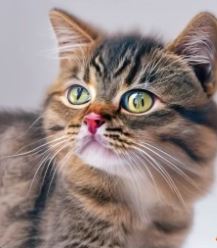 While cats may have a reputation for being aloof, anyone who has experienced the warmth of their affection knows that they can be incredibly loving creatures. Describing cats as affectionate and loving highlights their capacity for forming deep emotional bonds with their human companions.
While cats may have a reputation for being aloof, anyone who has experienced the warmth of their affection knows that they can be incredibly loving creatures. Describing cats as affectionate and loving highlights their capacity for forming deep emotional bonds with their human companions.
4. Independent and Self-Sufficient
Cats are known for their independent nature. They possess a self-sufficiency that sets them apart from many other pets. Their ability to navigate the world on their own terms and take care of themselves lends an air of autonomy to their character.
5. Playful and Curious
Cats have an innate sense of curiosity that is exemplified in their playful nature. From chasing their tails to pouncing on invisible prey, their antics can bring endless joy and entertainment.
Cats are creatures of complexity with a myriad of characteristics that make them intriguing and captivating.
What Kind of Person Makes the Best Cat Owner? (Kind of an important question)
Let me give you my opinion on what type of person makes the most suitable cat owner
In my opinion, being a cat owner is a unique and rewarding experience.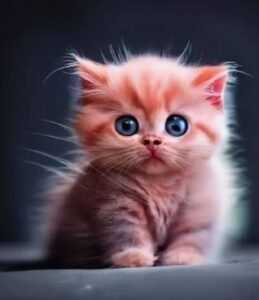 Cats are known for their independence, mystery, and charm. They can bring joy and companionship to almost anyone’s life.
Cats are known for their independence, mystery, and charm. They can bring joy and companionship to almost anyone’s life.
However, not everyone is cut out to be a cat owner. It takes a special type of person to truly excel in the role of a cat parent. In this post, I’ll share my thoughts on what qualities make the best cat owner.
First and foremost, I think patience is a crucial characteristic of a great cat owner. Cats have their own unique personalities, and they may take some time to warm up to their owners. It’s important to give them the space and time they need to adjust and trust you.
Patience also comes into play when dealing with behavioral issues or training. Cats can be stubborn creatures, so being patient and understanding goes a long way in building a strong bond with your feline companion.
Additionally, I believe that being observant is key to being a great cat owner. Cats communicate in subtle ways, and it’s important to pay attention to their body language and behaviors.
By observing your cat closely, you can better understand their needs, preferences, and even their mood. This can help you provide the best care and environment for your furry friend.
Another quality that I believe makes the best cat owner is being adaptable. Cats have their own unique preferences and quirks, and they may not always conform to our expectations.
As a cat owner, you need to be adaptable and open to changing your routines or habits to accommodate your feline friend’s needs. This could mean rearranging furniture to create a cozy perch for your cat or adjusting your daily schedule to ensure they receive enough playtime and interaction.
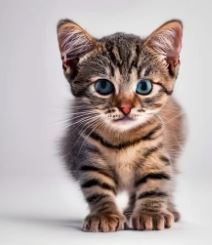 I also think that being a responsible cat owner is extremely important. Owning a cat comes with a set of responsibilities, including providing proper nutrition, regular veterinary care, and a safe and stimulating environment.
I also think that being a responsible cat owner is extremely important. Owning a cat comes with a set of responsibilities, including providing proper nutrition, regular veterinary care, and a safe and stimulating environment.
Responsible cat owners also prioritize their cat’s well-being by ensuring they are microchipped and wearing identification tags, just in case they ever get lost. Taking these responsibilities seriously shows that you are committed to providing the best care for your furry companion.
Lastly, I believe a cat owner should possess a loving and nurturing nature. Cats thrive on love and attention, and it’s important to shower them with affection regularly.
Whether it’s through gentle cuddles, playtime, or simple quality time spent together, cats need to feel loved and secure in their environment. Being a nurturing cat owner means providing a home filled with warmth, comfort, and plenty of love.
In conclusion, these are the qualities that, in my opinion, make the best cat owner. Patience, observance, adaptability, responsibility, and a loving nature are all key characteristics that contribute to a strong and fulfilling relationship with your feline friend.
By embodying these qualities, you can ensure that your cat has the best possible life and that you experience the joys of being a cat owner to the fullest. So, if you possess these characteristics, you might just be the perfect fit for a feline companion of your own!
Are you sick of hearing about cats yet? Probably not because you have made it this far down the site…Now it’s time for :
Cat Questions..Quite a few of them! (We also provide the answer…not just the question)
Why do cats arch their back?
If you’ve ever noticed your cat suddenly arching its back when feeling threatened or irritated, you might be wondering why they do so. This behavior, known as piloerection, occurs to make themselves appear larger and more intimidating. By arching their back, cats can make their fur stand on end, which not only makes them appear larger but also helps to protect their vital organs.
Why do cats always land on their feet?
Cats possess an extraordinary ability to land on their feet, often defying gravity. This phenomenon is known as the “righting reflex” and is a result of their highly developed inner ear and flexible spine. When a cat falls, they instinctively use their inner ear to detect the direction of gravity and then twist their body mid-air to align themselves properly. It’s nature’s way of ensuring that our feline friends are as nimble and agile as possible!
Why do cats and dogs hate each other?
While not all cats and dogs hate each other, it is true that these two species can have a strained relationship. However, it’s important to note that this hostility is not inherent but rather a result of different socialization and territorial instincts. Dogs are pack animals, while cats are solitary creatures by nature. This fundamental difference in their social behavior can lead to conflicts when they are forced to share a living space. However, with proper introduction and time, cats and dogs can learn to peacefully coexist and even become the best of friends.
Why do cats and dogs have tails?
Yes. Good question..Interesting decision indeed! Tails play a significant role in both cat and dog behavior, communication, and balance. For cats, their tails act as a communication tool. When a cat is feeling content and relaxed, their tail will be in an upright and relaxed position. Conversely, an agitated or frightened cat will hold its tail low or between its legs as a sign of distress.
In dogs, tails are not only a form of communication but also serve as an essential balancing tool. When a dog is running or making sharp turns, their tail helps to stabilize their body, preventing them from falling over. Additionally, tails also express emotions. A wagging tail usually indicates happiness and excitement, while a tucked tail is often a sign of fear or anxiety.
Why do cats attack feet?
Does it feel like your feline friend has made a personal vendetta against your feet? Don’t worry; you’re not alone! Cats often target feet because they are low-lying objects that resemble prey. Their hunting instincts stimulate them to stalk and pounce on moving objects, and your feet become the perfect target for their playful attacks. Remember, it’s just their way of engaging in interactive play, so don’t take it personally!
Why do cats attack their owners?
Cat attacks on owners are relatively rare but can occur in certain situations. Aggression towards owners can be a result of fear, pain, redirected aggression, or excessive stimulation. Sometimes, cats may perceive unintentional actions by their owners, such as sudden moves or loud noises, as threats and respond defensively. Additionally, if a cat is in pain or feeling unwell, they may act out aggressively towards their owners.
Why do cats bite when you pet them?
Cats biting during petting can be a sign of overstimulation. When cats are feeling overwhelmed or irritable, they may resort to biting as a way to communicate their discomfort. Pay close attention to your cat’s body language, such as tail twitching or flattened ears, as these can be cues that your furry friend has had enough attention. Respect your cat’s boundaries and take breaks during petting sessions to ensure a more enjoyable experience for both of you.
Why do cats bring you dead mice?
Though unsettling to us, this behavior harkens back to a cat’s primal instincts as natural-born hunters. By bringing you a dead mouse, your cat is displaying a gesture of trust and affection. You are seen as a part of their family, and the instinct to share food is deeply ingrained. While it may not be ideal for us humans, try to appreciate the sentiment behind the gesture.
Why do cats bury their waste product?
Cats are known for their cleanliness, and burying their waste falls in line with this trait. In the wild, burying their waste helps to conceal their presence from potential predators and maintain their territory. Domesticated cats still retain this instinct, and by burying their waste, they are establishing their private “bathroom” area and minimizing any scent that might attract unwanted attention.
Why do cats bite their nails?
Like humans, cats need to keep their claws sharp and free from debris. Biting their nails helps them achieve this. Regular nail biting is a way for cats to maintain their nail hygiene, allowing them to continue their natural instinct to hunt effectively. However, excessive nail biting could indicate an underlying issue, such as anxiety or discomfort. If you notice your cat obsessively biting their nails, consult your veterinarian for further evaluation.
Why do cats bathe each other?
Cats grooming each other, also known as allogrooming, is a behavior rooted in social bonding. Grooming helps maintain a healthy coat and removes dirt or parasites. By engaging in reciprocal grooming sessions, cats form closer connections within their social group, whether it be with other cats or even their human companions. It’s their way of showing care and affection, much like humans exchanging hugs or handshakes.
Why do cats bunny kick?
The adorable bunny kick is a common behavior observed in cats during play or moments of excitement. This instinctive movement mimics the way cats would attack prey in the wild, using their sharp back claws to grab and immobilize. Bunny kicking can also be seen during moments of high energy or as a defense mechanism when feeling threatened. Although it may seem aggressive, it is usually harmless and best left for playtime with toys rather than hands.
Why do cats chirp?
You may have noticed your cat making a chirping sound while watching birds outside the window. The truth is, this behavior is rooted in their hunting instincts. Cats chirp as a way to mimic the sounds birds make. By doing so, they are practicing their hunting skills and expressing excitement or frustration at their tantalizing prey.
Why do cats cry?
Cats cry for various reasons. One common cause of crying is when they are hungry or thirsty. Similar to babies, cats know that their cries often lead to getting their needs met. However, it’s essential to rule out any underlying medical conditions that could be causing distress, such as urinary tract infections or intestinal discomfort. If you suspect your cat’s crying is abnormal, it’s best to consult with your veterinarian for further examination and guidance.
Why do cats chatter?
Have you ever witnessed your cat sitting by the window, chattering at birds or squirrels? This quirky behavior is believed to be closely tied to their predatory instincts. When a cat chatters, it’s a sign of intense focus and excitement. They are mimicking the motion of biting their prey, essentially practicing their hunting techniques. It’s a fascinating behavior to observe, and it reveals the primal instincts that still reside in our domestic cats.
Why do cats chase their tails?
If you’ve ever seen your cat engage in tail-chasing antics, you may wonder what motivates this behavior. Tail-chasing is usually seen in kittens or young cats, and it often serves as a form of play. Kittens are learning coordination and honing their hunting skills through such playful behavior. However, in some cases, excessive tail-chasing could indicate boredom or anxiety. Providing ample mental and physical stimulation, such as interactive toys or play sessions, can help redirect their attention and alleviate such behaviors in adult cats.
Why do cats cry at night?
Cats are crepuscular animals, which means they are most active during dawn and dusk. As nocturnal predators by nature, they are hardwired to be more active at night. If your cat cries at night, it could be a combination of seeking attention, expressing their hunting instincts, or feeling lonely. Creating a comfortable and enriching environment for your cat, with plenty of toys and activities during the day, can help reduce nighttime restlessness.
Why do cats chew on plastic?
The sight of your cat chewing on plastic bags or other plastic objects may raise concerns. It’s important to understand that cats explore the world through their mouths, much like human babies. Chewing on plastic objects can be a form of sensory exploration. However, plastic is not safe for cats to ingest, as it can cause intestinal blockages or other health issues. To prevent this behavior, ensure your cat has access to safe and appropriate chew toys, and store plastic objects securely out of their reach.
Why do cats drool?
One of the intriguing behaviors of cats is drooling. You may have noticed your furry companion leaving tiny droplets of saliva when they are content or relaxed. Cats drool as a response to their emotions, often expressing pleasure and contentment during petting sessions or when being groomed. It can also occur due to overstimulation during playtime or even when they are anticipating food. While some cats drool more than others, excessive drooling could indicate a dental or medical issue, warranting a veterinarian’s attention.
Why do cats drool when they purr?
The combination of purring and drooling is a fascinating phenomenon observed in many cats. When cats are in a state of deep relaxation or immense pleasure, the physiological response triggers the salivary glands to produce excess saliva. Researchers believe that the same part of the brain controls both purring and drooling, hence the close association between these behaviors.
Why do cats dig?
Have you ever witnessed your beloved feline digging on soft surfaces like blankets, pillows, or even your lap? This behavior stems from their innate instinct to create a comfortable and secure space to rest or prepare for sleep. By kneading and digging, cats can manipulate their bedding, making it softer and more to their liking. Moreover, this behavior is reminiscent of their wild ancestors preparing nests for their young ones.
Why do cats do “airplane ears”?
Cats have an extraordinary range of movements and expressions, including the iconic “airplane ears.” Also known as “sideways ears” or “mood ears,” this posture occurs when cats have their ears flattened, pointing outwards. It is usually an indication of fear, aggression, or stress. When cats feel threatened, they adopt this defensive pose to protect their delicate ears from potential harm and send a warning signal to potential aggressors.
Why do cats drool when you pet them?
Drooling while being petted is a sign that your furry friend is immensely relaxed and enjoying the experience. This salivary response is their way of expressing pure contentment and pleasure. It’s a wonderful compliment to your petting skills and shows that your cat feels safe and loved in your presence.
Why do cats drink a lot of water?
Water is essential for the overall health and well-being of every living creature, including cats. Like humans, cats require an adequate intake of water to stay hydrated and maintain a healthy body. Consuming a substantial amount of water is crucial for cats, as it promotes proper kidney function, helps maintain body temperature, aids digestion, and supports overall organ health. Cats often regulate their water intake according to their environment, activity levels, and diet.
Why do cats dislike water?
*Ever tried giving your cat a bath and had to pay the price with scratches?* The common belief that cats universally dislike water is not entirely accurate. While many cats have an aversion to water, some cats actually enjoy it! The dislike of water is rooted in their ancestral history, where their survival instincts taught them to avoid bodies of water for self-preservation. Additionally, cats have a natural dislike for the sensation of wet fur, which they find uncomfortable. However, there are exceptions to this rule, as some cats do not mind water and may even enjoy playing with it or swimming!
Why do cats dig before drinking?
If you have ever observed your cat pawing or digging around their water bowl before taking a sip, don’t worry – it’s perfectly normal! Cats possess an instinctual behavior inherited from their wild ancestors that prompts them to dig around water sources. This digging action mimics the natural behavior of creating a clean and fresh water source in nature. By pawing, they are imitating the action of clearing debris or dirt from the water’s surface, ensuring it’s safe to drink. While most domestic cats have clean water provided by their caring humans, this inherited behavior still persists as an instinctual trait.
https://cats.fandom.com/wiki/Main_Page
https://icatcare.org/advice/thinking-of-getting-a-cat/
https://www.petplan.co.uk/pet-information/cat/advice/cat-lover-personality-traits/